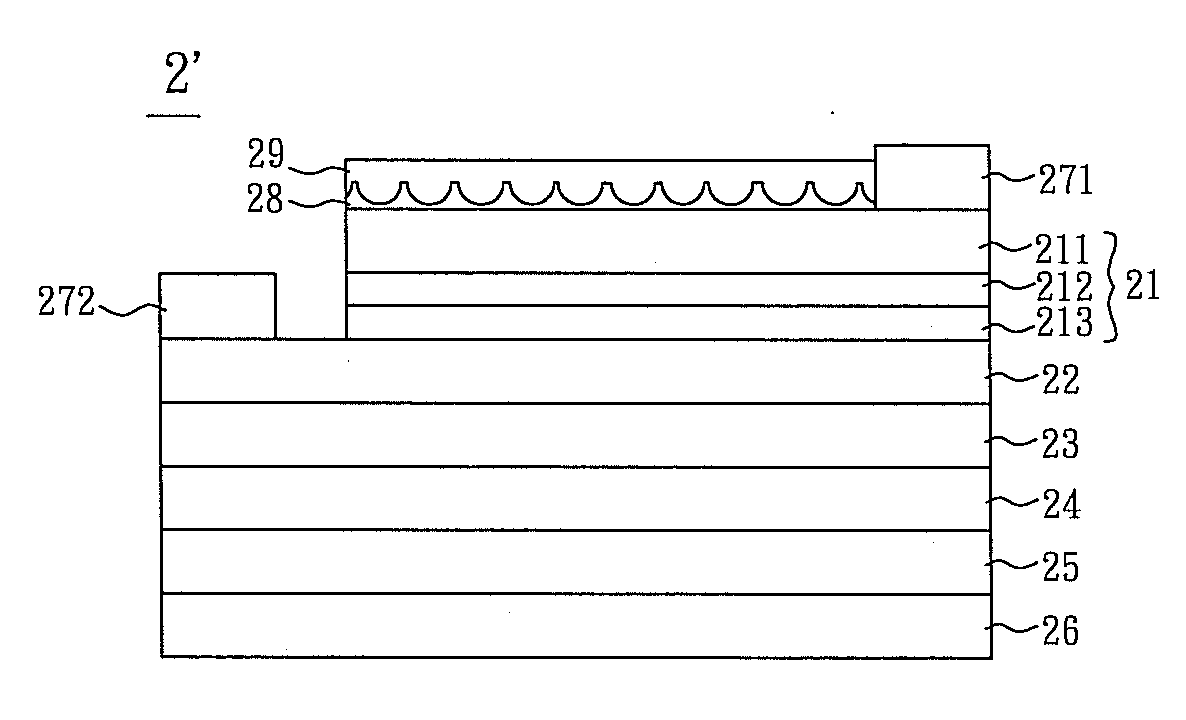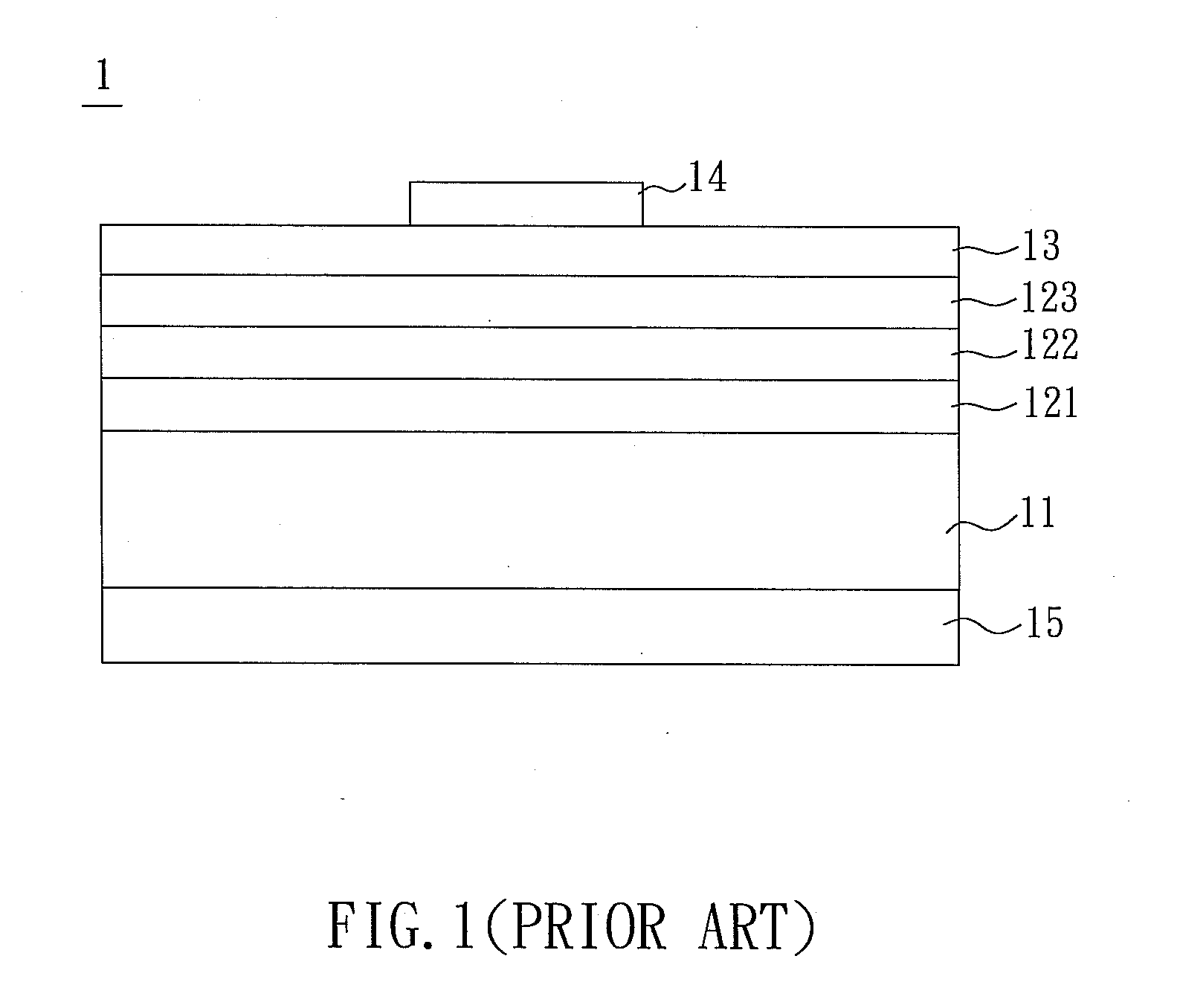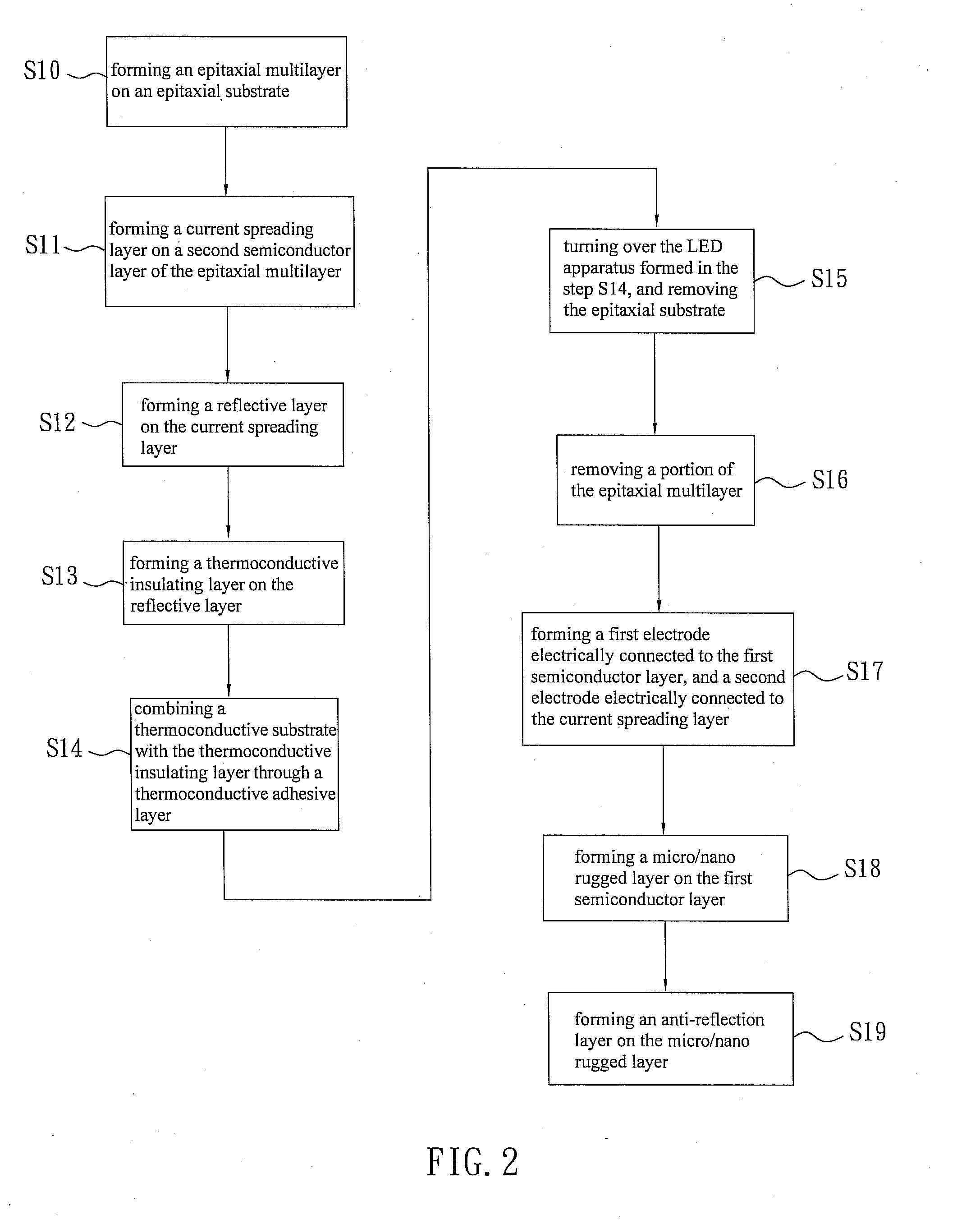Light-emitting diode apparatus and manufacturing method thereof
a technology of led apparatus and light-emitting diodes, which is applied in the direction of electrical apparatus, semiconductor devices, radio control devices, etc., can solve the problems of poor light-emitting efficiency, low luminance, poor light-emitting efficiency, etc., and achieve the effect of increasing the light-emitting efficiency of led apparatus and reducing the total reflection loss
- Summary
- Abstract
- Description
- Claims
- Application Information
AI Technical Summary
Benefits of technology
Problems solved by technology
Method used
Image
Examples
first embodiment
[0022]As shown in FIG. 2, a manufacturing method of a LED apparatus according to a first embodiment of the invention includes steps S10 to S19. Illustrations will be made by referring to FIG. 2 in conjunction with FIGS. 3A to 3K.
[0023]As shown in FIG. 3A, in step S10, a first semiconductor layer 211 is formed on an epitaxial substrate 20, an active layer 212 is formed on the first semiconductor layer 211, and a second semiconductor layer 213 is formed on the active layer 212. The first semiconductor layer 211, the active layer 212 and the second semiconductor layer 213 constitute an epitaxial multilayer 21. In this embodiment, the first semiconductor layer 211 and the second semiconductor layer 213 can be respectively a P-type epitaxial layer and an N-type epitaxial layer, or respectively the N-type epitaxial layer and the P-type epitaxial layer.
[0024]As shown in FIG. 3B, in step S11, a current spreading layer 22 is formed on the second semiconductor layer 213. In this embodiment, t...
second embodiment
[0034]Referring to FIG. 4, a manufacturing method of a LED apparatus (a vertical type LED apparatus) according to a second embodiment of the invention includes steps S20 to S27. Illustrations will be made by referring to FIG. 4 in conjunction with FIGS. 5A to 5G.
[0035]As shown in FIG. 5A, in the step S20, an epitaxial multilayer 31 is formed on an epitaxial substrate 30. The epitaxial multilayer 31 is composed of a first semiconductor layer 311, an active layer 312 and a second semiconductor layer 313 in sequence. In this embodiment, the first semiconductor layer 311 and the second semiconductor layer 213 can be respectively a P-type epitaxial layer and an N-type epitaxial layer, or respectively the N-type epitaxial layer and the P-type epitaxial layer.
[0036]In FIG. 5B, the structure after the steps S21 to S23 are performed is illustrated. In step S21, a current spreading layer 32 is formed on the second semiconductor layer 313. In this embodiment, the material of the current spread...
PUM
 Login to View More
Login to View More Abstract
Description
Claims
Application Information
 Login to View More
Login to View More - R&D
- Intellectual Property
- Life Sciences
- Materials
- Tech Scout
- Unparalleled Data Quality
- Higher Quality Content
- 60% Fewer Hallucinations
Browse by: Latest US Patents, China's latest patents, Technical Efficacy Thesaurus, Application Domain, Technology Topic, Popular Technical Reports.
© 2025 PatSnap. All rights reserved.Legal|Privacy policy|Modern Slavery Act Transparency Statement|Sitemap|About US| Contact US: help@patsnap.com



